Self-funding
Self-funding a warmer home
Most energy efficiency grants currently available, such as the Warm Homes: Local Grant, are targeted at the most vulnerable members of our society. To qualify for funding, you typically must earn below a certain income threshold or have a pre-existing health condition that is affected by the cold.
If you fall outside of these criteria but still want to improve the energy efficiency of your home, you may be looking to self-fund the upgrades to your home. Self-funding can be a complex process with many considerations to be made to ensure you receive the best works for your property, installed safely and with confidence at a reasonable price. This page will provide an initial outline of the process, including steps you should take to make sure any work done on your property meets the required standards.
Establishing your budget
Figure out how much you have available to fund the upgrades to your home. According to the University of Nottingham, the average cost to extensively retrofit a home is £69,000. While this number may be intimidating, it’s important to note you can still have a significant and impactful effect on the energy efficiency of your home for a substantially lower cost. By figuring out your budget early, you, or one of the organisations suggested below, can tailor your improvements to make sure you’re getting the most value for your money.
Extra assistance and green finance
Even when self-funding, there may still be options to receive financial assistance for certain improvements depending on the council tax band and energy performance certificate rating of your home.
Even if you’re not a low-income household, you can still qualify for the Boiler Upgrade Scheme and the Great British Insulation Scheme. These schemes can provide full or part funding towards insulating your home or installing an energy efficient heating system, such as a heat pump.
Green finance
Green finance products are financial tools specifically designed to support environmentally friendly projects, such as energy efficient home upgrades. These products can play an important role in funding housing retrofit projects that may be unable to access government grant funding or are homes that are privately owned through options like:
- Green Home Improvement Loans
- Green Mortgages
- product-specific financing
- equity release schemes
These financing solutions can make it easier to improve the energy efficiency of your home by reducing upfront costs and offering favourable terms, thereby lowering the financial barriers to investing in your home’s energy efficiency.
Each product operates differently and may suit various project types, housing categories, tenures and ownership structures. For example:
Green Mortgages assume that energy efficient homes lead to lower fuel bills, making it easier for homeowners to repay their loans. This reduced risk for lenders can mean you receive preferential mortgage rates for buyers of energy efficient properties compared to those with higher energy costs.
Equity Release Options are based on the increased property value after improvements, allowing homeowners to borrow more if needed while retaining a smaller share of their home’s equity.
Alternatively, innovative financial products cover upfront costs for renewable energy installations in full. Repayment is then made through a service charge linked to the property itself – meaning the debt remains with the property and only applies while the homeowner or tenant lives there.
Given the variety of products, it’s important to clearly understand whether green finance products are right for you and what option may be best for your retrofit journey.
To explore what green finance options might be available for your home, it’s best to consult directly with your bank or mortgage provider.
Choosing your desired product and installer
There are many considerations when choosing how to improve your home, however, most energy efficiency organisations recommend a fabric-first approach. This means that it’s important to treat the fabric of the building to ensure heat and energy loss is reduced before improving any other aspect of your home. This can be done through wall and loft insulation, in addition to ensuring energy efficient windows and doors are in place.
Do not rush when choosing an installer, and we advise you ensure installer is qualified through Trustmark.
Trustmark is an independent body that encompasses multiple accreditation schemes for contractors. If there’s an issue with your installation, Trustmark will be able to help resolve it and guarantee you do not lose money or permanently damage your home.
We advise that you:
- Contact multiple Trustmark verified installers.
- Get a minimum of 3 separate quotes (to ensure you receive the best price).
- Keep your documents.
After you’ve had work completed on your property, keep any documents you might receive throughout the process. If there is a problem with your installation, you may need those documents as proof to confirm that your installation was completed by a Trustmark verified installer and receive the appropriate support and compensation.
Further questions
If you have anything else that you want to ask about, before, during or after installation work, contact us.
